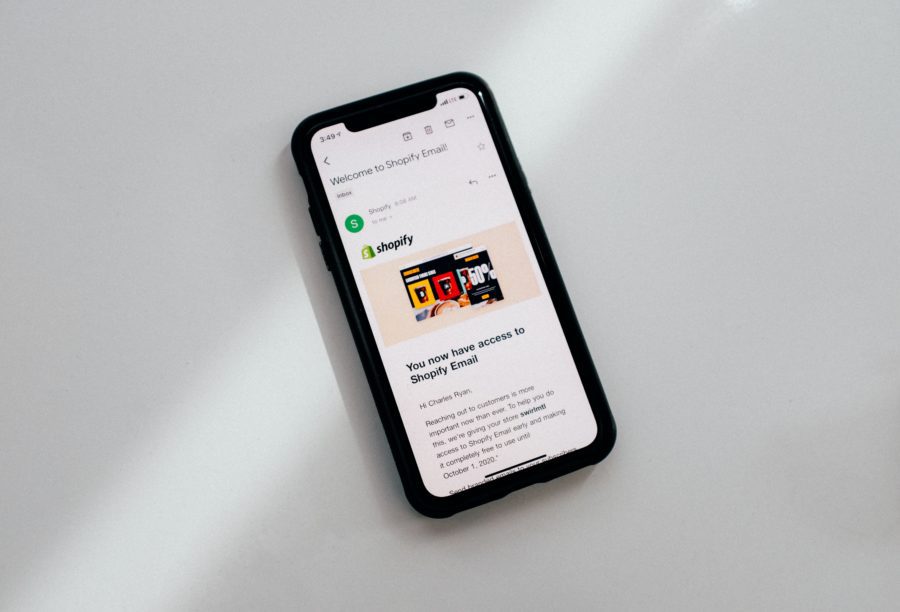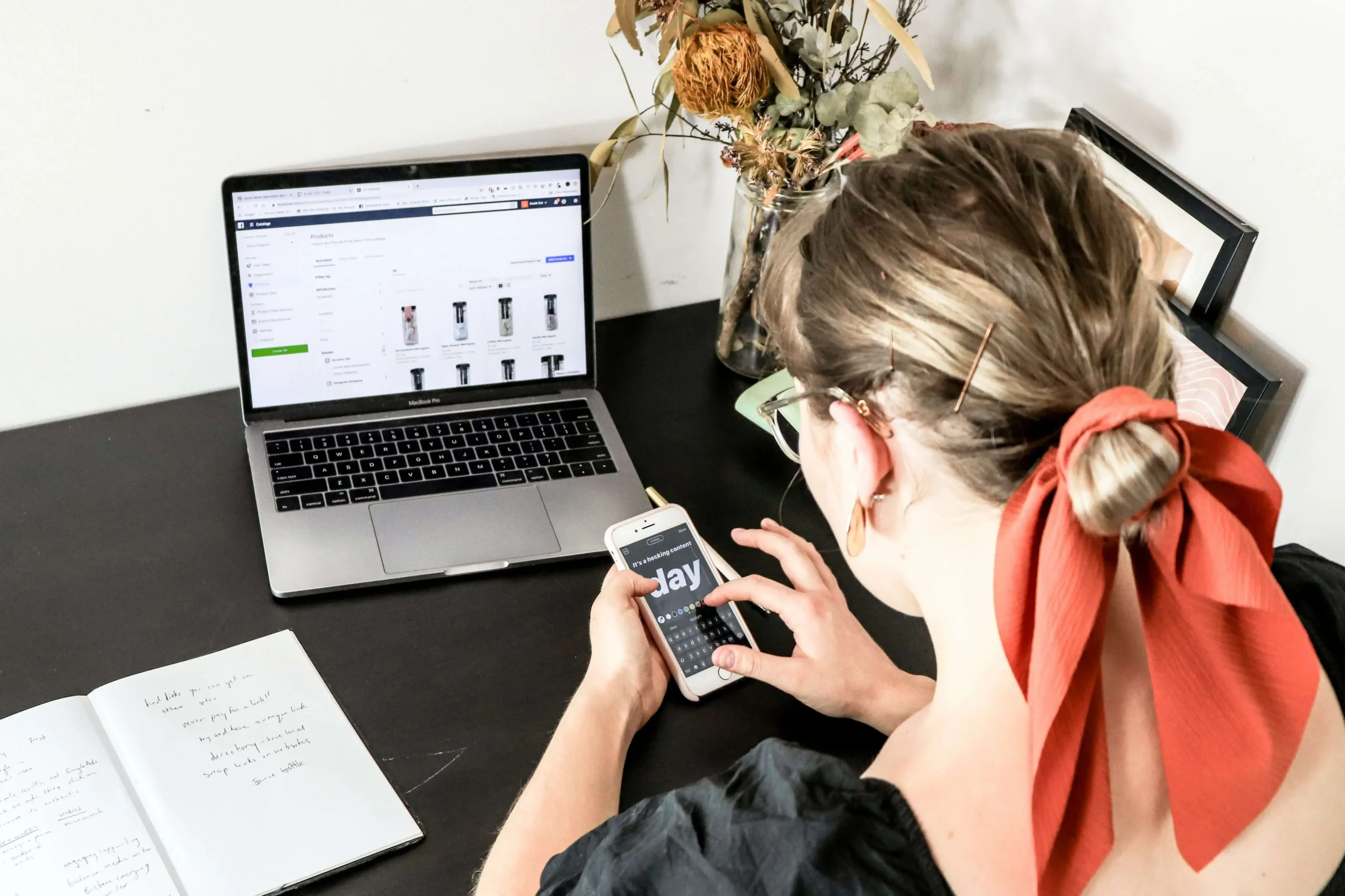
Estimated reading time: 10 minutes
Shopify remains one of the most popular platforms for creating and building eCommerce brands from scratch. Its accessible and easy-to-use layout allows both startups and corporate giants to manage their online stores.
However, it’s one thing to create a Shopify website, but building a loyal fanbase is something else entirely.
Brand loyalty doesn’t happen overnight, and with 55% of UK consumers saying they trust brands less than they did in the past, creating a strong, reliable, and consistent brand presence is essential to gaining long-term trust and loyalty.
Before jumping into what it takes to create loyal customers and a memorable brand, let’s look at why brand loyalty is important.
Related Links
The Importance Of Brand Loyalty
Considering that 65% of a brand’s purchases come from repeat customers, brand loyalty is an essential target to aim for.
If a customer is loyal to a brand, they are less likely to be persuaded by other businesses offering similar products or services to yours. Plus, according to the 2021 Loyalty Barometer Report, 81% of consumers actively want to form a relationship with a brand, indicating a strong desire for personalized experiences and meaningful connections.
Brand loyalty goes beyond simply liking a product or service, it’s about aligning themselves to something they care about. For example, Patagonia has successfully created a huge following of eco-conscious buyers who are happy to pay more for clothing that supports a cause they believe in.
So, not only does brand loyalty allow businesses to demand a higher price for their offerings, but they can do so knowing that their consumers won’t be deterred by it.
Building Your Brand On Shopify
Shopify is known for its accessibility when it comes to creating your online store. However, it’s going to take more than a well-designed eCommerce store and a great product to get people talking about your brand.
We’re going to look at the core pillars that support successful brand-building to help you stand out from the crowd.
Research Your Audience And Competitors
Research is the most important part of building a brand. Without it, you’ll be relying on guesswork, and that won’t get you far.
Start by identifying your competitors. Look at how they’ve designed their websites, and what kind of products they’re selling. Do they have a USP? How are they marketing themselves? Where are they based?
Answering these questions will help you see how you line up with your competitors and identify any areas for improvement.
Next is identifying your audience. Google Analytics is a great starting point to learn more about your audience and allows you to gather insights like their age, gender, and location.
You can dig a little deeper here and create ideal buyer avatars or personas to help you picture your ideal buyer. Who are they and where are they shopping? What are they buying? What are their pain points? Knowing this will help you pinpoint who you’re targeting.
For example, if your Shopify store sells handmade jewelry, your ideal buyer persona might be someone like Sarah, a 30-year-old professional with an appreciation for unique, artisanal accessories.
This personalized representation can guide your marketing strategies and product offerings to better suit the preferences and needs of your target audience.
Having a handle on this before designing your eCommerce site will help you focus on how you want to position your brand and the audience you’re looking to attract.
Build A Brand That Drives Awareness
Now you’ve got a better idea of your audience and competitors, it’s time to start designing your brand.
Without a recognizable brand, it’s hard to drive awareness, because what makes you different to your competitors? Here are a few key points to nail when it comes to building your brand personality on Shopify.
Your Brand Voice
Your brand voice is how you communicate with your audience, what you sound like, what words you use, and how you want your audience to feel when reading your content.
For example, Brewdog has a cool, punchy, and down-to-earth brand voice. Here’s an example of their Shore Leave product description:
“This is Shore Leave, a 4.3% amber ale that isn’t afraid to rock the boat. Move over stale ale. This is unreal real ale.”
Compare this to Grey Goose:
“From the finest French wheat to the final bottling. From start to finish, the natural brilliance of Grey Goose shines through.”
One brand sells punchy rock and roll beer and ale, the other sells the purest, cleanest vodka. While they’re both aimed at consumers over 18 who enjoy a drink from time to time, there’s a pretty distinct difference in tone, right?
The way you communicate with your audience needs to be identifiable and consistent across all channels. Sure, there’s room for small shifts in tone when posting on different channels (your Instagram voice may be slightly more fun than your print ads), as it remains recognizable.
Your Logo
Your logo is essentially the flagship of your brand. It’s one of the first things you design, place on your website, and stick over merchandise. However you design your logo, it needs to work across your website, social media channels, any merchandise, videos, and print media.
You should also consider having both a text version (known as a Wordmark) and an icon. For example, Nike has their iconic ‘tick’ icon as well as their Nike typography (Futura Extra Bold Condensed) Wordmark. In fact, 61% of Fortune 500 company logos contain both a wordmark and an icon.
Ultimately, your logo should be entirely unique to your brand and instantly recognizable across any platform or medium.
Your Brand Colours
Colors play an important role in not only defining your brand but how people feel about your brand. Like brand voice, your color palette should be consistent across all channels.
Choosing a color or color palette that’s accurate or aligns with your brand can help inform your customers’ decisions. Take a look at the color emotion guide for some inspiration or use a tool like Coolors to experiment with what palettes you enjoy.
There’s no right or wrong way to choose your colors. Just make sure you’re happy with them and they evoke the right response from your audience.
Consistency And Adaptation Are Key
As your brand continues to grow, it’s important to remain consistent and be open to the idea of adapting and growing with market trends.
Consistency is key in pretty much any context when it comes to building brand awareness. Everything from your logo and your brand voice to how you package your products needs to remain consistent if you want to live rent-free in your audience’s heads.
Regularly posting content also helps with this. Whether that’s by scheduling posts on social media, updating your blog content, or sending out promotional offers, you may start to fade from their memory and interest.
Case Study: Elevating Sweetie Pie Organics With A Shopify Website Redesign & Branding

It All Starts With Mom
Sweetie Pie Organics, dedicated to creating innovative food solutions for expecting and breastfeeding mothers, approached Matchbox Design Group to redefine their visual identity and messaging through a new eCommerce website. With a focus on natural ingredients and convenience for busy mothers, their products include nausea drops and lactation smoothies, offering a blend of delicious flavor and effectiveness.
Our Approach
We kicked off the project by utilizing a Shopify template as our foundation, enhancing it with a custom site structure and design. This transformation resulted in a vibrant, user-friendly website that significantly enhanced the overall purchasing experience for Sweetie Pie Organics’ customers.
Key Contributions
- Site Mapping: Streamlining the user journey through thoughtful site mapping.
- Shopify Website Design & Development: Enhancing the Shopify template with custom design elements for a unique brand experience.
- Content Strategy: Crafting a compelling content strategy to showcase the brand’s story and products effectively.
- Copywriting: Developing engaging and informative copy to communicate the brand’s values and benefits.
- Branding: Redefining the visual identity with a fresh style guide, incorporating new colors, illustration styles, and unique visual elements.
A Fresh Approach to an Existing Brand

Sweetie Pie Organics, recently acquired by the Handi-Craft team, sought a revamp for both their website and brand. Matchbox Design Group embraced the challenge by creating a new style guide that included additional colors, playful illustration styles, and unique visual elements such as organic shapes and waves. The goal was to achieve a look that elevated the brand while maintaining its original essence.
Custom, Playful Iconography

Introducing custom illustrated icons infused with hand-drawn playfulness, we injected more brand personality and color throughout the entire website. These unique icons added a delightful touch to each page, enhancing the overall user experience.
A Style Paving the Way for Brand Growth
Working collaboratively with Sweetie Pie Organics, we delved into what made their products unique. The insights gathered were translated into product pages that strike the perfect balance between essential product information, eye-catching visuals, and compelling messaging. This strategic approach not only showcased their offerings but also paved the way for the brand’s future growth.
The collaboration between Matchbox Design Group and Sweetie Pie Organics resulted in a visually appealing and strategically designed Shopify website. The new online platform not only reflects the essence of the brand but also provides an enhanced user experience, setting the stage for Sweetie Pie Organics’ continued success in the food and beverage eCommerce industry.
Final Thoughts
Building a brand on Shopify takes time, and that’s not to mention earning loyal brand followers.
Starting with a strong foundation is the most crucial step to achieving growth and making a name for yourself in your industry. Getting the basics right and remaining consistent across the board will help solidify your brand presence and drive awareness going forward.
As your brand starts to grow, you will learn more about your business and you may have to adapt once in a while – and this is okay! As long as the original essence of your brand stays the same, your audience should remain loyal.
Contact Matchbox Design Group Today!
If your website could use a refresh or you’re looking to drive more traffic to your site, fill out the form below and we’ll contact you to learn more about your digital needs.
Building A Brand On Shopify: FAQ
Q: Can you list your own products on Shopify?
A: Yes, absolutely! Shopify is a versatile e-commerce platform that allows you to showcase and sell your own products. You can easily set up your store, add product listings, and manage your inventory all within the Shopify interface.
Q: How do I create my own brand name?
A: Crafting a unique and memorable brand name is a crucial step in establishing your business identity. Start by brainstorming keywords and concepts related to your brand. Consider the tone, values, and message you want to convey. Check for domain availability, ensure it’s not already in use, and make sure it aligns with your target audience.
Q: How many Shopify stores are successful?
A: The success of a Shopify store varies widely and depends on numerous factors, including the niche, marketing strategy, product quality, and more. Many Shopify stores have achieved significant success, but there is no one-size-fits-all answer. Success often stems from effective marketing, a solid business plan, and a commitment to customer satisfaction.
Q: How many products can I put in my Shopify store?
A: No, Shopify doesn’t impose a fixed limit on the number of products you can add to your store. The pricing plan you choose, however, may affect the available storage space. Be mindful of your plan’s limitations and consider upgrading as your product range expands.
Q: Do I need a license to sell on Shopify?
A: The need for a license depends on your location and the nature of your business. In many cases, you may need to register your business and obtain the necessary permits and licenses to operate legally. Check with your local authorities or consult with a legal professional to ensure compliance with regulations in your area.

